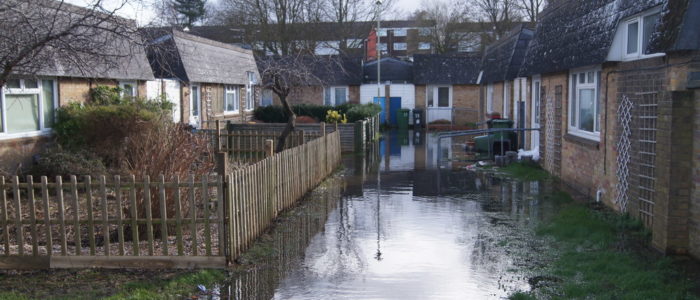Flood Plain to High Water Table: A Sump Pump is Essential for Any Type of Ground Water Risk!
Just about to move property and discovered a sump pump half-hidden in the cellar? The previous owners probably forgot it was there, and it may not work very well, or at all – especially if it’s more than ten or more years old. Do you know if your home or business is located on a Type 3 flood plain? This is an area the Environment Agency determines has a “1 in 100 or greater annual probability of river flooding”.
The Environment Agency say that of a population of 66.6 million in England and Wales, around one in 12 or 5.2 million residential properties are now at risk of any type of flooding. It’s also predicted that 45,000 more households could be at the highest category of flood risk in the next 30-40 years.
Article Chapters
Water will rise through cracks in the foundations
You may have already experienced devastation caused by the increasing frequency of extreme rainfall, such as storm surges, flash floods or burst river banks. But properties with basements or cellar areas are also prone to another problem – ground water floods.
This less dramatic but equally damaging event occurs simply because a house is built in an area where the water table is above the level of the foundations and where the type of soil readily absorbs water. During periods of heavy rainfall, water will rise through cracks in the foundations and penetrate the walls.
The sump pump is now required as an essential utility in many homes, but what type and size will you need to adequately pump water away from your basement? If you have a pump already installed, does it work and if not, it will definitely need to be replaced.
Able to function underwater as water levels rise
The first thing you should know about the type of sump pump you need is that there are different pumps for different types of fluids – clear water, sewage, grey water (e.g. used for washing dishes, clothes, or bathing) and salt water.
Next there are two basic types of pump – ‘pedestal’, where the motor is fixed above the sump and remains untouched by water, and ‘submersible’, where the motor is protected with a water-resistant casing and the entire unit is able to function underwater as water levels rise in the sump pit. They also generally run more quietly and efficiently and are longer-lasting.
Each type of pump covers one volume range only
A sump pump’s output to handle the water volume is critical. Each type of pump covers one volume range only to an optimum level. A further factor will be the diameter of the pipes for discharging the volume output. Pumping volume decreases the higher it is pumped due to the absolute height difference between the lower and upper water level.
Depending on frequency of use, sump pumps with permanently attached level sensors for switching on and off automatically are more reliable than mechanical contact switches. There are also different types of float switch with minimum sump diameter requirements.
Specifying the right size sump pump for each specific location and water volume handling is crucial to avoid potential unit failure. A full site audit by experienced sump pump experts is always strongly recommended.
Which sump pump is best for your property?
Our full electronic audit will tell you!
TEL 01634 215192

